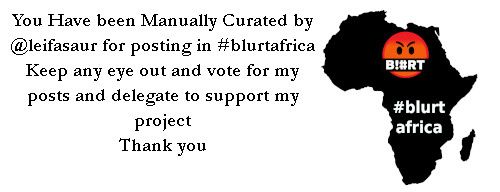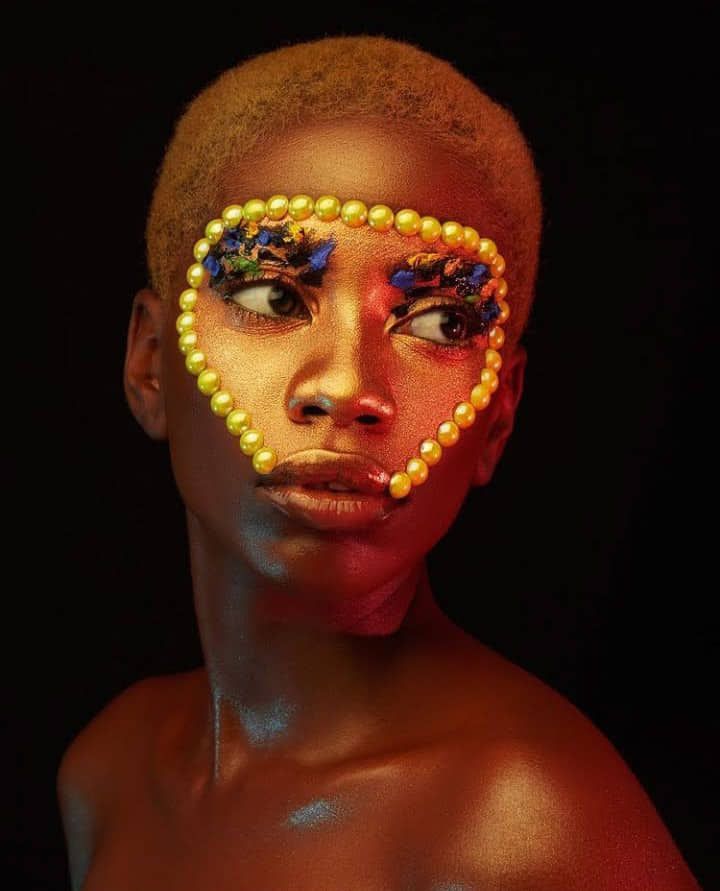
Africa is a continent rich in cultures, traditions, languages and different aesthetic ideas. With so many different races crossing the continent, beauty standards and concepts vary but are equally important among many tribes.
Afirika jẹ kọnputa ti o ni ọlọrọ ni awn aṣa, aṣa, awn ede ati awọn imọran ẹwa ti o yatọ. Pelu ọpọlọpọ awọn oriṣiriṣi awọn ere-ije ti n kọja kọntin naa, awọn iṣedede ẹwa ati awọn imọran yatọ ṣugbọn jẹ pataki bakanna laarin ọp ọlọpọ awọn ẹya.
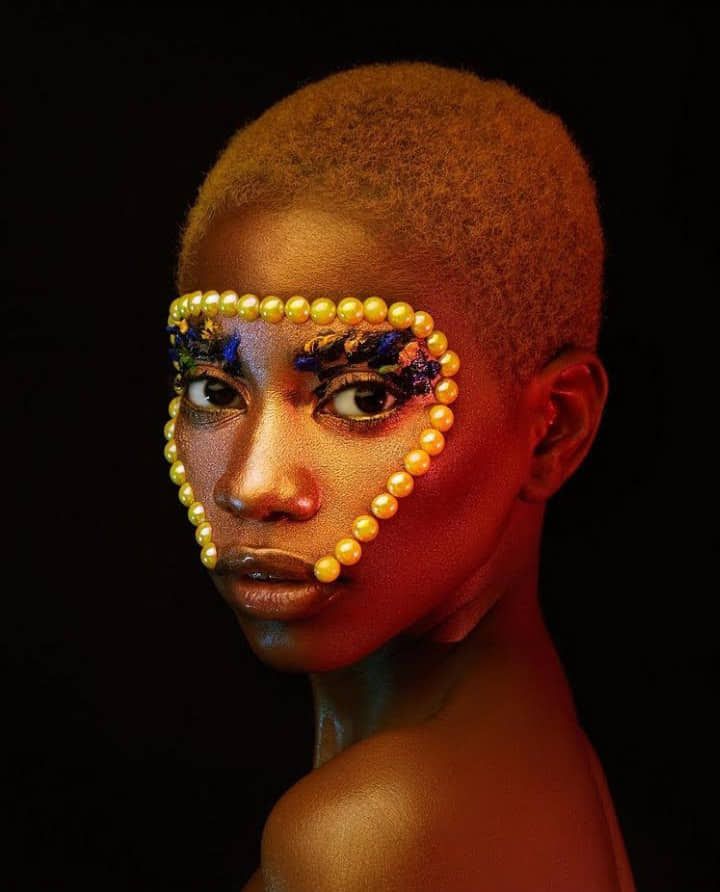
Tribal composition plays an important role in many groups. Makeup, usually in the form of face paint, is used for many different purposes and can mean many different things such as hunting, religious and cultural, military purposes or to intimidate an enemy. It also functions as a social marker, distinguishing between boys and men, men and elders, men and women, and ethnic groups and strangers.
Akopọ ẹya ṣe ipa pataki ni ọpọlọpọ awọn ẹgbẹ. Atike, nigbagbogbo ni irisi awọ oju, ni a lo fun ọpọlọpọ awọn idi oriṣiriṣi ati pe o le tumọ si ọpọlọpọ awọn nkan bii isode, ẹsin ati aṣa, awọn idi ologun tabi lati dẹruba ọta. Ó tún ń ṣiṣẹ́ gẹ́gẹ́ bí àmì àjùmọ̀ṣe, tí ń fi ìyàtọ̀ sáàárín àwọn ọmọkùnrin àti ọkùnrin, àwọn ọkùnrin àti àgbàlagbà, àwọn ọkùnrin àti obìnrin, àti àwọn ẹ̀yà àti àjèjì.
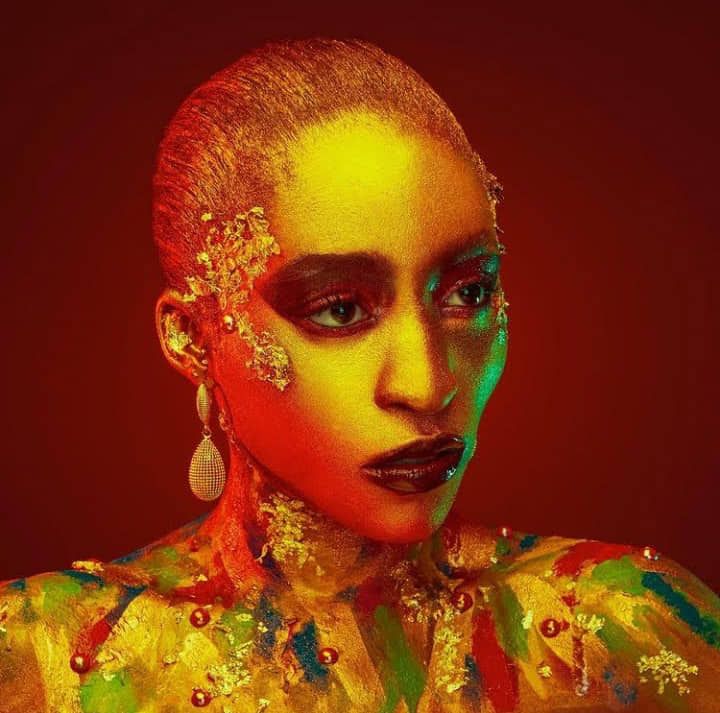
Face painting conveys status and conveys strong cultural significance. Africa has an estimated total of 3000 tribes, all of which differ in terms of language, culture and customs. Clay is often used to paint the face using different tints using dried plants and flowers. Every color and every symbol has a meaning. Black is often used to represent power, evil, death and mystery, while gray is often used to represent security, authority, maturity and stability. Purple generally represents royalty, luxury, wisdom and passion and purple is used for joy, energy and warmth. Red is used for danger, courage, speed and energy and blue represents peace, tranquility, courage and love.
Kikun oju ṣe afihan ipo ati ṣafihan pataki aṣa ti o lugbara. Afrika ni infoju ti awọn ẹya 3000, gbogbo eyiti o yatọ ni awọn ofin ti ede, aṣa ati aṣa. Amo ti wa ni igba lo lati kun awọn oju lilo orisirisi tints lilo gbígbẹ eweko ati awọn ododo. Gbogbo awọ ati aami kọọkan ni itumọ kan. Black ti wa ni igba lo lati soju agbara, ibi, iku ati oshun ijinlẹ, nigba ti grẹy ti wa ni igba lo lati soju aabo, aṣẹ, idag asoke ati iduroṣinṣin. Purple gb gbogbo duro fun ọba, igbodun, ọgbọn ati ifẹ ati eleyi ti a lo fun ayọ, agbara ati igbona. A lo pupa fun ewu, igboya, iyara ati agbara ati buluu duro fun alaafia, ifokanbalẹ, igboya ati ifẹ.
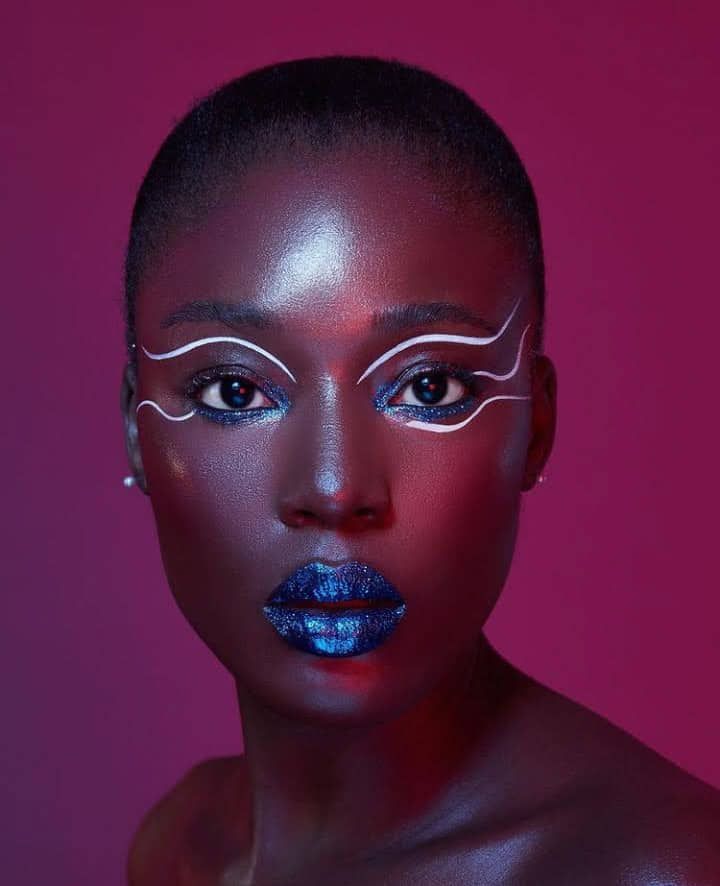
Green is often used for life, growth, freshness and healing while white represents hope, purity and light. The Karo people are undisputedly skilled by nature. Among other things, they are known for their attractive and complex body colors. They decorate their bodies with white chalk found in the area, yellow artificial stones, iron and dirt. It is a broad technique with patterns ranging from small simple dots to strong but visible lines drawn with the palm or fingers. The visual representations of the Guinea fowl are some of the visual representations of their bodies.
Awọ alawọ ewe nigba gbogbo lo fun ignasi aye, idag asoke, alabapade ati iwosan lakoko ti funfun duro fun ireti, mimọ ati ina. Awọn eniyan Karo jẹ ọlọ bọn lainidii nipashe da. Lara awọn phun miiran, won mọ fun awn awọ ara ti o wuyi ati idiju. Wọn ṣe ọṣọ ara wọn pẹlu chalk funfun ti a rii ni agbegbe, awọn okuta atọwọda ofeefee, irin ati erupẹ. O jẹ ilana gb oro pẹlu awọn ilana ti o wa lati awọn aami kekere ti o rọrun si awọn laini ti o lagbara ṣugbọn ti o han pelu ọpẹ tabi awọn ika ọwọ. Awọn aṣoju wiwo ti awn ẹiyẹ Guinea jẹ diẹ ninu awọn farahan oju-ara tiara wọn.
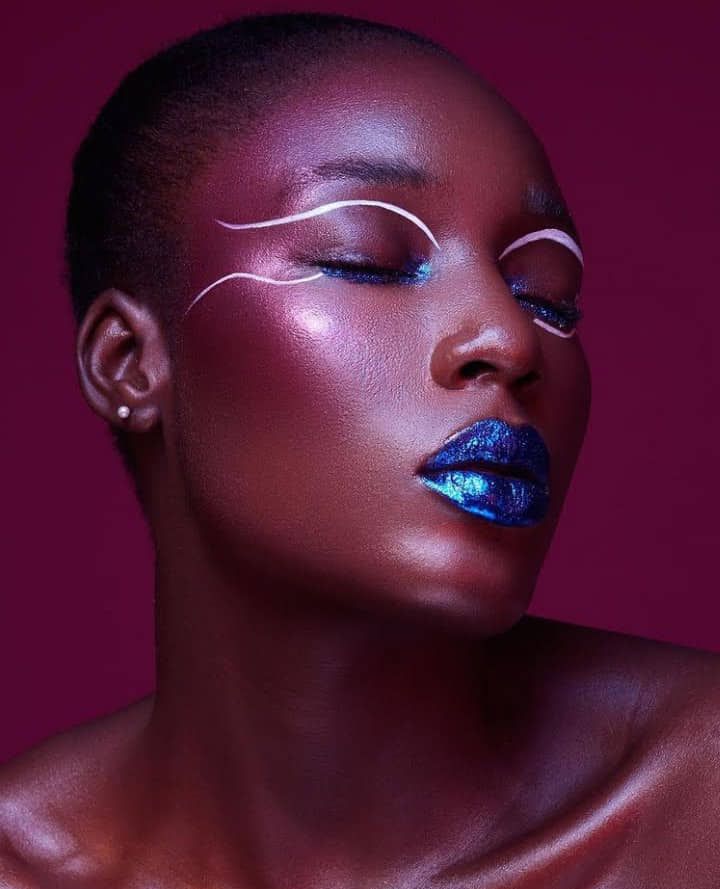
Both men and women use this model and jewelry to make their opposite sex more attractive. This is also done on special occasions. he respects their cultural heritage. By filming instructional videos about traditional ethnic makeup from different parts of Africa, these women celebrate the beauty of their origins (and teach others about different makeup options). Whether you want to adapt these traditional makeup routines for everyday use (like this Instagrammer does beautifully!) And remember, it's important to respect other people's backgrounds without making cultural mistakes - if your heritage isn't African, it's possible to learn and appreciate these cultural gems without putting them down. yourself. So keep watching these tutorials! You will find these unique types of African beauty from West Africa to Niger.
Messeeji awọn ọkunrin ati awọn obinrin lo awoṣe yii ati awn phun-ọṣọ lati jẹ ki ibalopo ikeji won wuni diẹ sii. Eyi tun ṣe ni awọn igba pataki. ó bọ̀wọ̀ fún phun-ìni àṣà ìṣẹ̀dálẹ̀ won. Nipa yiya awọn fidio ikẹkọ nipa atike ẹya ibile lati oriṣiriṣi awọn ẹya ni Afirika, awọn obinrin wọnyi ṣe ayẹyẹ wa ti ipilẹṣẹ won (ati kọ awọn miiran nipa awọn aṣayan atike oriṣiriṣi). Boya o fẹ lati ṣe deede awọn ilana atike mobile wọnyi fun lilo lojoojumọ (bii Instagram yii ṣe lẹwa!) Ati ranti, o ṣe pataki lati bọwọ fun awọn ipilẹ ti awọn eniyan miiran laisi ṣiṣe awọn aṣiṣe aṣa - ti ohun-ini rẹ kii ṣe Afirika, o ṣee ṣe lati kọ ẹkọ ati riri iwọnyi asa fadaka lai fifi wọn si isalẹ. funrararẹ. Nitorinaa tẹsiwaju wiwo awọn ikẹkọ wọnyi! Iwọ yoo wa awọn iru alailẹgbẹ ti ẹwa Afrika lati Iwọ-oorun Afrika si Níger.
